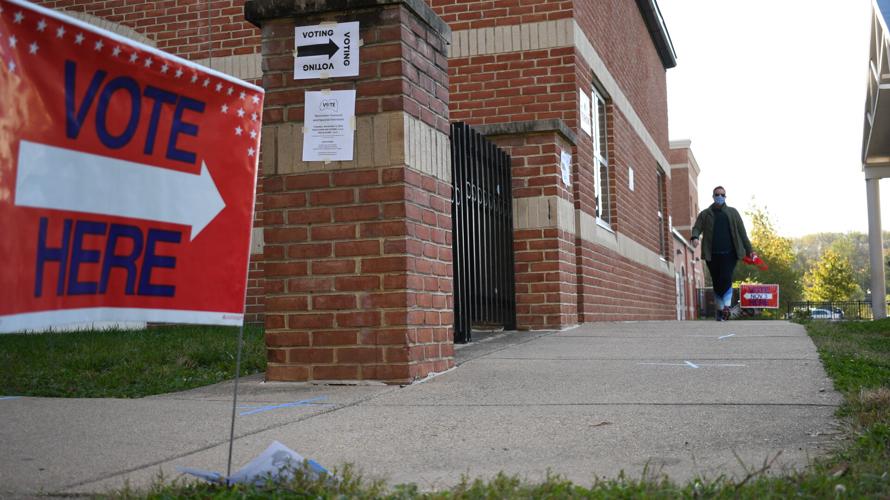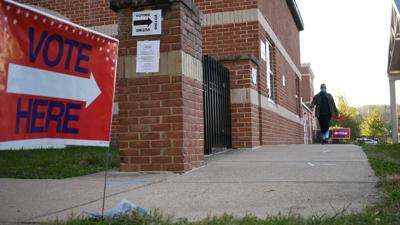All the big political forecasting firms have statistical models that they use to predict the upcoming midterm elections, and I thought I would try my own.

David Kerr
I am only focusing on the House of Representatives. My model is a mix of multiple regression (seeing which variables appear to correlate with certain outcomes), the impact of topical political trends and some common sense. I have used this approach before; during the last midterms, in 2018, it was surprisingly accurate.
The multiple regression model I use is simple. I use data going back as far as 1950 to look for the factors that have the most correlation to the number of seats won or lost in the House. Usually the question is how many seats will the party that’s in the White House lose?
I took factors I thought would have the most impact on the outcome, and my model tested their impact. I ended up using two variables.
First, and this is always telling, is the popularity of the President. A wildly popular President can have coattails, and an unpopular one can hurt his party’s chances. The 2018 midterms showed this effect. Second, there is the “misery index.” This is the inflation rate plus the unemployment rate. Combine Presidential popularity with the inflation and unemployment rates, and you have a basis for some predictions.
In this year’s midterm election, which will be held in a few weeks, neither of these factors is that helpful for the Democrats. Unemployment is low, but combined with inflation, the economic misery index is at a 15-year high. As for President Biden’s popularity, almost every poll has him well below 50%. My model suggests Democrats will lose 34 to 40 seats in the House.
However, other factors can come into play that affect the projection. There are some historical examples of this. In 2002 the GOP did exceptionally well in what some referred to as the “national security” midterm election, and in 1998, in a backlash against the Clinton impeachment trial, the Democrats had a surprisingly good midterm election. So, conventional wisdom doesn’t always apply.
Could something similar happen this year? This election has several issues that are not good for Republicans. The Supreme Court’s decision to overturn Roe v. Wade, which could lead to making abortion illegal in parts of the United States, is going to have an effect. A large majority of women voters, even conservative women, didn’t like the decision and may hold their noses and vote for a Democrat in protest.
There is also another, related factor. This decision has motivated Democratic voters, mostly women, to be more likely to vote – and to volunteer. Usually, the problem for the party in the White House is that the opposition party is more motivated to go to the polls. That may not be the case this year. This issue is certainly playing out in our region’s congressional races and is helping Democrats Jennifer Wexton and Abigail Spanberger in their reelection races.
It’s nearly impossible for the Democrats to hold onto the House. Too many swing seats are leaning toward the Republicans for that to happen. But the Roe v. Wade decision and the President’s recent legislative accomplishments, such as the climate change bill, might mitigate the normal trend against the party in the White House.
And of course, always in the background, is Donald Trump. He is a former President, but his lightning rod presence in the political scene still seems like a motivator for Democratic voters who might otherwise stay home.
Some have projected that these factors, plus a lot of money going to Democrats, might limit the party’s losses in the midterms. However, make no mistake, the Democrats are sure to lose seats. For some, a 20-seat drop, far better than the larger-scale losses models like mine predict – and I am kind of in the mainstream for this election – would be seen as a good result for the Democrats.
Just like my Little League baseball team back in the 1970’s – “We didn’t lose as badly as everyone expected.” And in the world of politics that’s a spin on the outcome that might leave the Democrats feeling good on election night.
David Kerr is an adjunct professor of political science at Virginia Commonwealth University and has worked on Capitol Hill and for various federal agencies for many years.






(1) comment
I suspect there are not going to be very many conservative women hold their noses and vote for democrats because of Roe v. Wade. Professor Kerr makes the common liberal assumption that women are simpletons so focused on one issue that they can't see the forest for the trees. Unlike all of the House democrats who voted for no restrictions on abortion up until birth, most women, even democratic woman don't support late term abortions. That is an extremist view. On top of that, most women of all colors and stripes can easily see how the Biden administration has made the wrong decision on every issue and is killing the economy, causing skyrocketing crime and they support children changing their gender without their parents' knowledge because supposedly teachers and school counselors know better. The Democratic Party leadership has been taken over fanatical perverted zealots. It will be a blood bath in November.
Welcome to the discussion.
Log In
Keep it Clean. Please avoid obscene, vulgar, lewd, racist or sexually-oriented language.
PLEASE TURN OFF YOUR CAPS LOCK.
Don't Threaten. Threats of harming another person will not be tolerated.
Be Truthful. Don't knowingly lie about anyone or anything.
Be Nice. No racism, sexism or any sort of -ism that is degrading to another person.
Be Proactive. Use the 'Report' link on each comment to let us know of abusive posts.
Share with Us. We'd love to hear eyewitness accounts, the history behind an article.